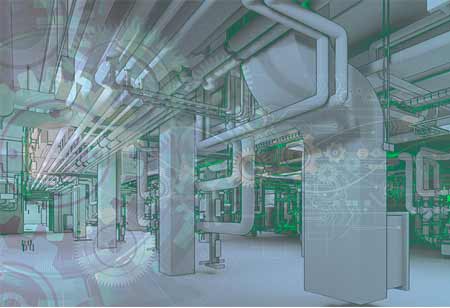Thank you for Subscribing to Construction Business Review Weekly Brief

How MEP Systems Shape Sustainability
MEP systems enhance building energy performance and sustainability and reduce operational costs. Green building certifications promote high-efficiency HVAC systems and renewable energy, with government incentives driving adoption.
Mechanical, Electrical, and Plumbing (MEP) systems are the foundation of any building, directly influencing its energy performance. Therefore, it is imperative to prioritize integrating energy-efficient MEP systems to advance broader sustainability objectives effectively.
The significance of energy-efficient MEP systems lies in their ability to mitigate various operational and environmental challenges. By minimizing energy consumption in critical functions such as heating, cooling, ventilation, and lighting, efficient MEP systems contribute to reduced operational costs and a diminished carbon footprint. Furthermore, optimizing these systems ensures enhanced occupant comfort by maintaining optimal temperature, humidity, and air quality, fostering improved well-being and productivity. Beyond immediate operational benefits, adopting energy-efficient MEP systems elevates the asset value of buildings. Structures with demonstrably lower energy consumption tend to attract higher rental rates and achieve elevated property values. Notably, the environmental impact is significantly reduced as lower energy usage reduces greenhouse gas emissions and diminishes resource depletion. In summary, implementing energy-efficient MEP systems enhances operational efficiency and aligns with broader sustainability goals, making it a prudent and responsible choice in contemporary building practices.
Green Building Certifications and Their Impact
Green building certifications such as LEED (Leadership in Energy and Environmental Design) and WELL offer robust frameworks for promoting sustainable construction practices. These programs establish clear benchmarks for energy efficiency within MEP systems, advocating the adoption of cutting-edge technologies. Notable examples include high-efficiency HVAC systems, incorporating features like variable-speed drives, energy recovery ventilators, and geothermal heat pumps. Additionally, the certifications emphasize LED lighting, demonstrating significant energy savings compared to traditional incandescent bulbs. Smart building controls are also encouraged, utilizing automated systems to optimize energy consumption based on occupancy levels and environmental conditions. Furthermore, the certifications promote the integration of renewable energy sources such as solar panels and wind turbines, aiming to reduce dependence on fossil fuels and contribute to a more sustainable built environment.
These certifications significantly influence project outcomes, notably contributing to improved energy performance by imposing more stringent energy efficiency standards than conventional codes. Furthermore, they augment the marketability of structures, drawing environmentally conscious tenants and investors seeking sustainable real estate options. Additionally, these certifications foster increased innovation by promoting the adoption of state-of-the-art green technologies within construction and design practices. Notably, their impact extends beyond individual projects, as certified buildings are pivotal in reducing the overall environmental footprint, aligning with broader sustainability objectives.
Strategies for Incorporating Renewable Energy Sources
In pursuing a net-zero future, integrating renewable energy sources within MEP systems emerges as an imperative. Several vital strategies play a pivotal role in advancing this objective. On-site solar photovoltaics (PV) stand as a fundamental approach, enabling the direct generation of electricity on-site and thereby diminishing dependence on the conventional grid. Wind turbines, particularly applicable in windy locations, emerge as another essential component, contributing significantly to power generation. Geothermal energy harnesses the Earth's internal heat for heating and cooling, offering a sustainable solution. Furthermore, bioenergy, derived from renewable biomass such as wood chips, presents a viable option for heating and power generation, aligning with achieving a sustainable and environmentally conscious MEP infrastructure.
Latest Developments
Recent advancements in the energy sector highlight several vital developments. Emerging technologies such as Building-Integrated Photovoltaics (BIPV), microgrids, and advanced storage solutions garner significant attention, signifying a shift towards more sustainable and innovative energy solutions. Concurrently, government incentives and regulations are pivotal in expediting the adoption of renewable energy sources, demonstrating a commitment to environmental sustainability. Additionally, the financial landscape of the renewable energy sector is witnessing positive transformations, with ongoing cost reductions in renewable technologies enhancing their competitiveness in the market. These combined factors underscore a promising trajectory for the renewable energy sector, positioning it as a critical player in the future of global energy.
By emphasizing the adoption of energy-efficient MEP systems, incorporating green building certifications, and incorporating renewable energy sources, the built environment can be a pivotal catalyst for sustainability. This comprehensive strategy aligns with environmental stewardship principles and demonstrates economic viability, laying the groundwork for a more sustainable future.








